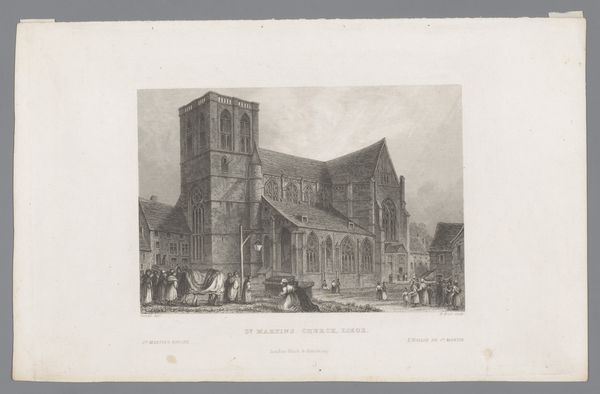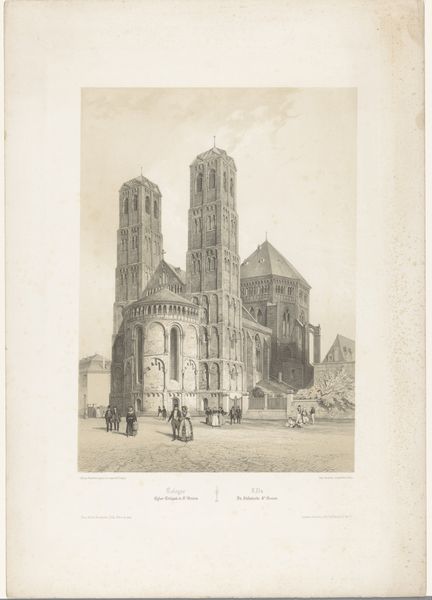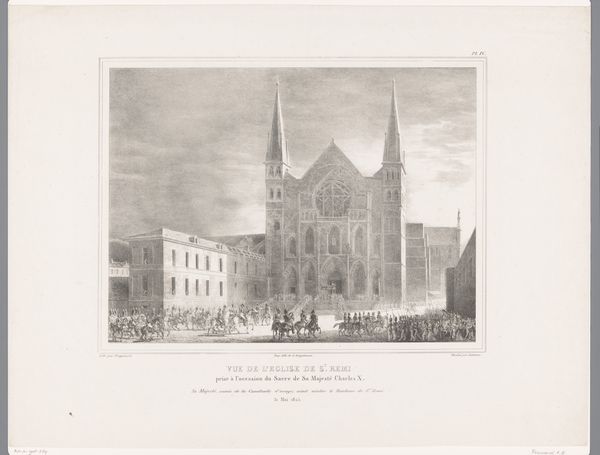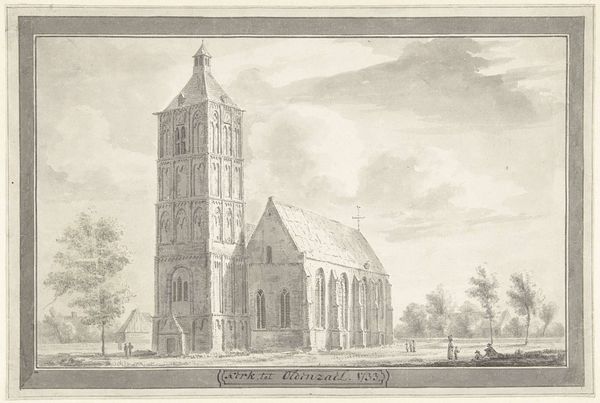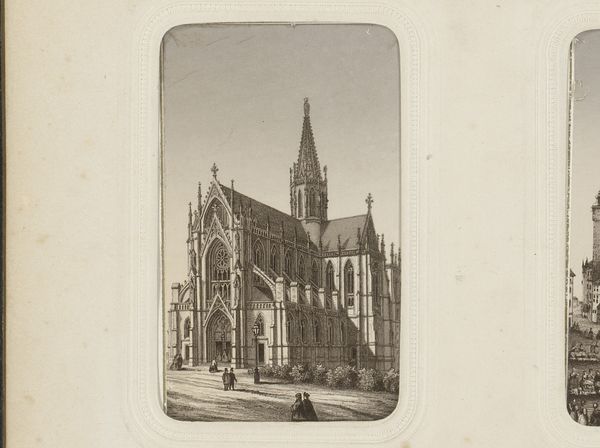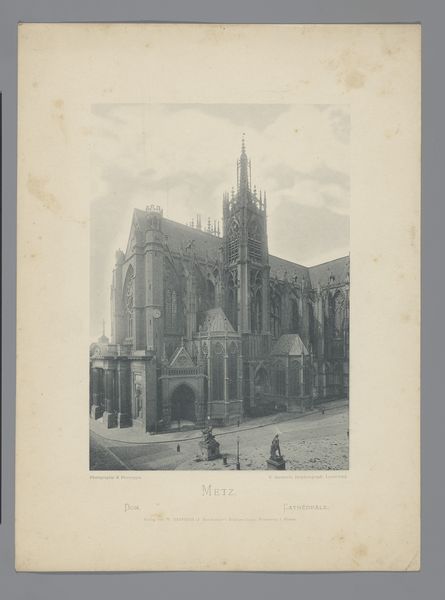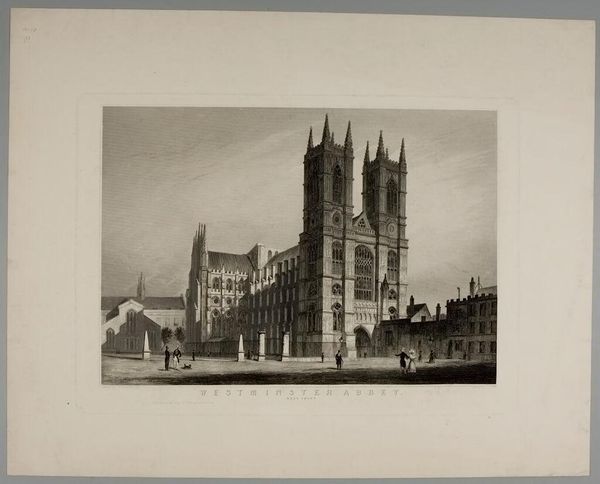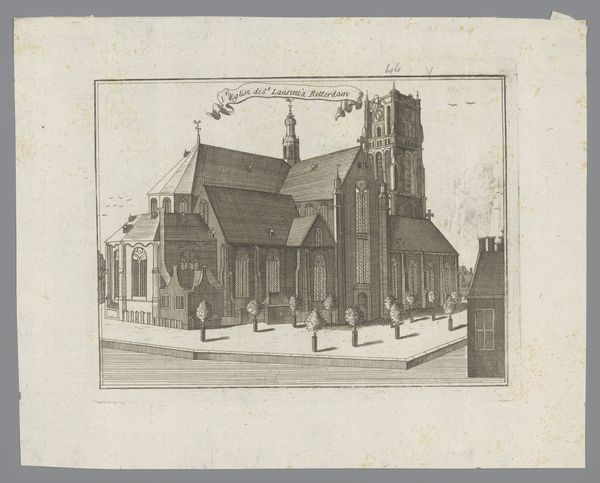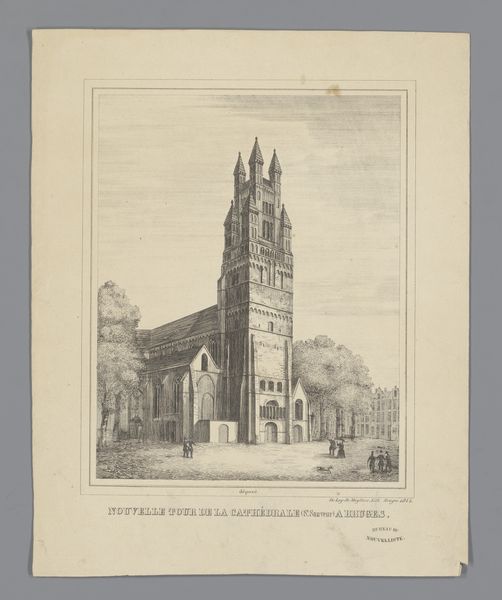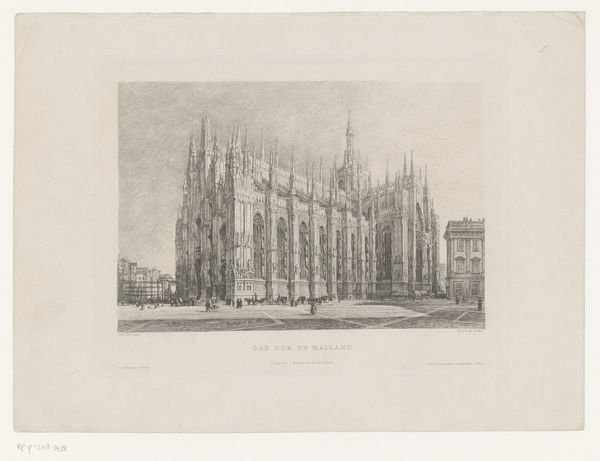
Gezicht op de Grote of Sint-Laurenskerk te Rotterdam 1839 - 1846
0:00
0:00
drawing, print, etching, paper
#
drawing
# print
#
etching
#
landscape
#
paper
#
romanticism
#
cityscape
#
realism
Dimensions: height 259 mm, width 324 mm
Copyright: Rijks Museum: Open Domain
Editor: This is "View of the Grote or Sint-Laurenskerk in Rotterdam" by Cornelis Gerrit Verburgh, made between 1839 and 1846 using etching on paper. It's so detailed! The etching reminds me of old photographs; everything seems very orderly and serene. What strikes you most about this cityscape? Curator: It's fascinating how Verburgh captures Rotterdam just before the sweeping changes of industrialization. Notice how the church dominates the skyline, a clear symbol of institutional power and social order at that time. Look closely at the people. What do their clothes, their carriages, their posture, tell you about Rotterdam society then? Editor: I see a real mix. There are clearly wealthier people in carriages and then crowds of others on foot...so quite a clear hierarchy? Curator: Precisely. Now, think about the placement of this image in its historical moment. The Dutch Golden Age was long over. How might an image like this, with its emphasis on established institutions, be trying to reinforce a particular narrative during a time of great social and economic upheaval? Was it simply a nostalgic view or a coded message? Editor: That’s interesting, the role art played in shaping those narratives...it definitely prompts you to think about what the artist is emphasizing and what’s left out. It feels more loaded now than just a pretty picture. Curator: Exactly. Considering how Verburgh's piece operated within that society adds layers of meaning. It makes one wonder how representations of cities reflect and influence their development. Editor: This makes me see the art piece and cityscape works very differently, as an active participant in reflecting and shaping history, not just as passive bystanders.
Comments
No comments
Be the first to comment and join the conversation on the ultimate creative platform.

